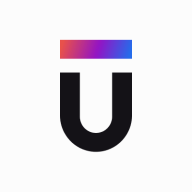


Find out in this report how the two Cloud Security Posture Management (CSPM) solutions compare in terms of features, pricing, service and support, easy of deployment, and ROI.


SentinelOne Singularity Cloud Security offers a streamlined approach to cloud security with intuitive operation and strong integration capabilities for heightened threat detection and remediation efficiency.
Singularity Cloud Security stands out for its real-time detection and response, effectively minimizing detection and remediation timelines. Its automated remediation integrates smoothly with third-party tools enhancing operational efficiency. The comprehensive console ensures visibility and support for forensic investigations. Seamless platform integration and robust support for innovation are notable advantages. Areas for development include improved search functionality, affordability, better firewall capabilities for remote users, stable agents, comprehensive reporting, and efficient third-party integrations. Clarity in the interface, responsive support, and real-time alerting need enhancement, with a call for more automation and customization. Better scalability and cost-effective integration without compromising capabilities are desired.
What are SentinelOne Singularity Cloud Security's standout features?SentinelOne Singularity Cloud Security is deployed in industries needing robust cloud security posture management, endpoint protection, and threat hunting. Utilized frequently across AWS and Azure, it assists in monitoring, threat detection, and maintaining compliance in diverse environments while providing real-time alerts and recommendations for proactive threat management.
Google Cloud Security Command Center streamlines security management by providing comprehensive visibility into asset security posture, empowering organizations to identify vulnerabilities and threats effectively.
Google Cloud Security Command Center offers a centralized platform for organizations to manage their security landscape, providing tools like threat detection and vulnerability scanning to protect cloud assets. Users benefit from its integration capabilities and detailed reporting, which enhance their ability to combat security challenges efficiently.
What are the key features of Google Cloud Security Command Center?Industries such as finance and healthcare benefit significantly from Google Cloud Security Command Center, as it helps them maintain compliance with strict regulations. Its ability to provide detailed security assessments and support integration with other cloud services makes it an essential tool for protecting sensitive data and ensuring uninterrupted service to customers.
Upwind is a dynamic platform for optimizing data management and enhancing analytic capabilities, renowned for its efficiency in handling large data sets effortlessly.
Utilized for generating actionable insights and improving decision-making processes, Upwind's robust infrastructure supports seamless integration with existing technology stacks. Its real-time analytics and intuitive design ensure a reliable performance, making it a top choice for organizations aiming to stay ahead. Users highlight the platform's ability to perform complex analysis swiftly, augmenting overall operational efficiency. While Upwind offers numerous benefits, there is room for improving its customization features and reducing occasional technical glitches. Its initial setup might be challenging, necessitating extensive guidance for new users.
What are the most valuable features of Upwind?
What benefits and ROI can users expect?
In industries ranging from finance to healthcare, Upwind is employed to enhance data-driven strategies, streamline workflows, and ensure informed decision-making processes. Businesses benefit from its integration capabilities that enable smooth adoption without overhauling current systems, and its real-time analytics support rapid response to market changes.
We monitor all Cloud Security Posture Management (CSPM) reviews to prevent fraudulent reviews and keep review quality high. We do not post reviews by company employees or direct competitors. We validate each review for authenticity via cross-reference with LinkedIn, and personal follow-up with the reviewer when necessary.